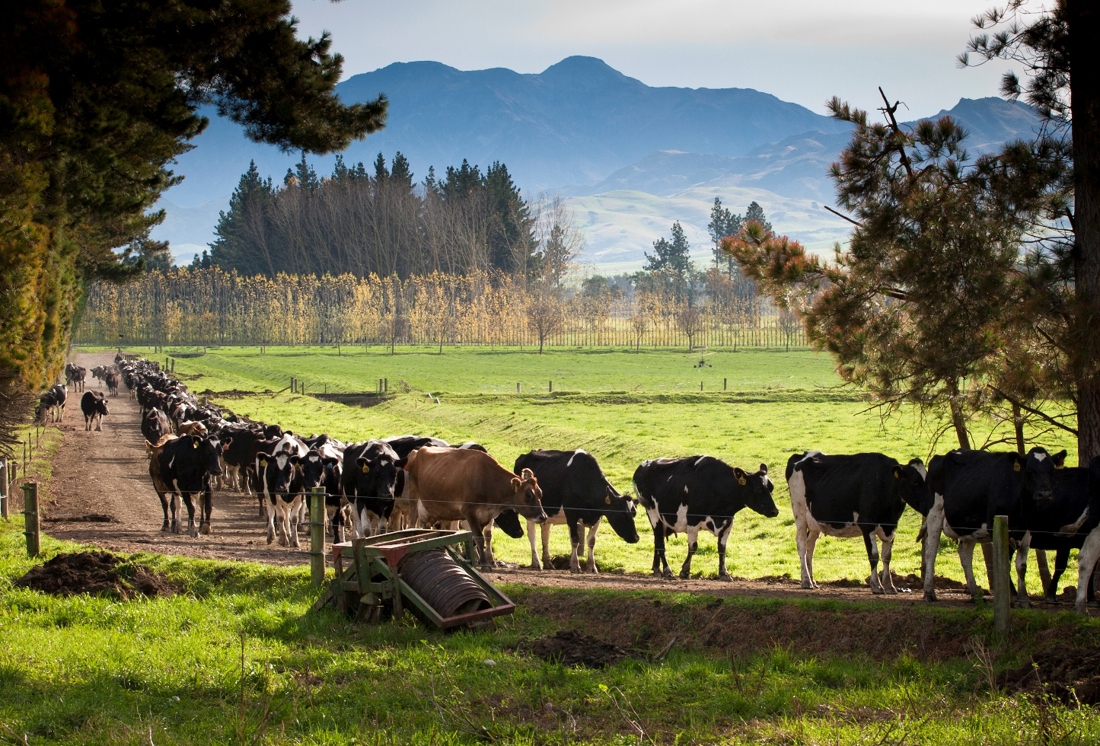Genetic Base Cow
2 min read
Breeding Worth (BW) and Breeding Values (BV) indicate an animal’s genetic merit compared to 'base cows'. The genetic base cow, updated regularly, ensures relevant comparisons amongst the national herd can be made by reflecting genetic progress. This update prevents large gaps between current animals and the base. While it informs BW and BV, it doesn't affect rankings; higher genetic merit cows remain more valuable. The scheduled update in 2025 will set the base to 2015-born cows. Read more about the genetic base cow below.
Each year, genetic improvement in the national herd results in replacement heifers having higher Breeding Worth than the previous year. To maintain relevant comparisons, the ‘genetic base cow’ or ‘base cow’ is updated to represent a younger group of cows.
Base cow changes are common practice across the world in the genetic evaluation system. Updating the base cow ensures that genetic progress is accurately reflected and prevents a large gap between current animals and the base cow. This informs the sector on setting Breeding Worth (BW) and Breeding Values (BV) but has little effect on the ranking; a cow with a higher genetic merit remains more valuable.

The genetic base cow serves as a reference point for evaluating the profitability of other dairy animals, helping compare and rank animals within a population based on their Breeding Worth (BW).
The base cow is updated in line with standardised international best practice. A new group of cows is selected from a cohort, every five years after the previous base, ensuring that the benchmark remains relevant and reflects genetic progress. Base cow changes are common practices across the world in genetic evaluation systems.
When the genetic base is updated, BW values are reset to zero for the new base cows, often resulting in an overall drop in BW values across the national herd. That’s because the new base represents a more recent animal. Cows today produce significantly more fat and protein than those from a decade ago. This progress means more profit from every cow and the base cow update simply recalibrates BW to keep up.
The change does not reduce stock value, as the change is near identical for all cows, bulls, and herds, and the relative genetic merit remains unchanged.
Updating the genetic base cow changes BW to reflect the positive genetic gain but has little to no effect on the BW ranking of cows. A base cow change doesn’t affect which bulls you are going to use, and it doesn’t change the cows you are going to keep.
The genetic base cow represents the average of a group of animals, with their evaluation set to zero for all traits. The base cow group consists of a group of average cows from a specific year. All other animals are assessed against this group. If an animal is more profitable than the average of the base cows, its BW is positive; if less, it's negative.
For example, imagine comparing this to a classroom where 'Tom' consistently scores 70% on his assignments. We decide to use Tom's score as a benchmark, setting his 70% as '0'. If you then score 75% on your next assignment, you will receive a value of +5 compared to Tom. Ultimately, we want everyone to be better than ‘Tom’ or in this case the ‘base cow’. This system allows breeders to compare and rank cows based on their genetic superiority relative to the base cow.
The same group of cows is used to define the base for all the traits. This group of cows defines the base because they represent the average animals born in 2015. Since underperforming cows are culled each year, this base cow includes those that did not survive to the fourth lactation, making it a standard cohort of cows from 2015.
After a genetic base cow change: Your best cow, is still your best cow.

Once the genetic base cow has changed you will notice a lower reported BW for all cows, bulls and herds when accessing their herd records. This drop in BW does not indicate a reduction in the genetic worth of any animals.
A change to the base cow causes only minimal re-ranking among bulls, cows, herds or breeds. It shifts all animals up or down depending on the genetic base that is chosen. All animals will still have the same production potential, and top-ranking cows will remain the same.
A change in BW does not represent a fall in stock value as the change is near identical for all cows, bulls and herds. To see which bull is outperforming another, always look at their rankings.
There is minimal re-ranking of herds, cows and bulls. The change in BW is near identical across all animals. Most traits are valued in Breeding Worth with linear Economic Values. As a result, when there is a base cow change, the drop in BW from these traits will be identical across all animals. Most traits affect BW linearly, meaning they shift the value in a straight line, for example, every extra kg of fat adds $5.27 to BW, regardless of how good or poor that animal’s genetics are for fat.
There is minimal re-ranking due to Udder Overall as this is a nonlinear trait. Udder Overall is treated differently, its impact on BW isn’t linear, it depends on whether the animal has weak, average or strong genetics for Udder Overall. Animals with weaker udder BVs receive a larger penalty to BW compared with those with more favourable udder BVs.
Despite these differences, the overall impact on the ranking of animals is minimal, with a 0.99 correlation with previous rankings. For older cows, you may see a slightly larger drop in BW due to the base change compared with younger cows. The expected impact is between $184 and $188; most animals will have a $185 drop in BW.

New Zealand’s dairy herd continues to make meaningful genetic improvement.
View the latest genetic trends in the national herd here.
As genetic gain in the national herd increases over time, the difference between the base cow and the national herd will increase. To adjust for this, the base cow is updated routinely to reflect the real, tangible genetic improvements happening on farm. Today’s cows are more efficient, more fertile, and produce more protein and fat than cows of 10 or 20 years ago. They have stronger udders, shorter gestation lengths, and fewer somatic cell counts. Updating the base cow captures that progress and keeps comparisons meaningful.

A base cow changes the BW of all animals by the same amount. Although these cows are genetically superior, their BW is reset to zero. This leads to a national herd reset, with an overall drop in BW observed each base change year, aligning the new genetic base cow with the current population.
Typically, the genetic base cow is updated every five years to ensure that genetic evaluations remain accurate and relevant. The base cow will be updated on June 20, 2025, to a 2015-born animal.
Before this, the last genetic base cow update was introduced in 2016, and a subsequent update was postponed due to the changes in the genetic evaluation that have occurred in the last few years.
On June 20, 2025, the genetic base cow will be updated to reflect the average of a group of animals born in 2015. This change will lead to a decrease in BW for all animals due to the shift in the reference base cow.
1. Breeding Worth (BW) for all cows, bulls and heifers will decrease by around $185 in June 2025.
2. The new national average for BW will become about $56.
3. This decrease in BW is due to a routine base cow change and does not represent a decrease in the value or loss of genetic gain of dairy animals.
4. There will be minimal re-ranking of herds, cows or bulls. The drop will be near identical across all animals.
The upcoming base cow is calculated using a group of well recorded 2015 born cows. On average, the cows in the upcoming 2015-born base were able to breed replacements who are $185 more profitable than those 2005 born base cows.
As a result of the scheduled 2025 update, BW will be scaled back by approximately $185. The current average (prior to 20th June) BW of the national herd is $241, and after June 20th will be $56. The new national average for Breeding Worth will be $56.
The 2025 group of cows that define the 'genetic base' consists of approximately 100,000 well-recorded cows born in the year 2015 with the following breed breakdown:
Holstein-Friesian: 22.8%
Jersey: 8.1%
Holstein-Friesian-Jersey crossbreds: 61.8%
Other (Ayrshire, Milking Shorthorn, other breeds and their crosses): 7.3%
The performance of the base cows is dictated by their genetic merit and how they were managed. Comparing the actual performance of base cows to other animals will not provide insight into the genetic merit of the other animals. The best way to compare the merit of some other group of animals to the base cows is to inspect the BVs and BWs of the other group of animals, to do this, try out the animal herd averages tool.
| Bottom 10% | Bottom 25% | Average | Top 25% | Top 10% | |
| 2005 Base Cow BW (prior 20th June) | 97 | 172 | 241 | 321 | 375 |
| 2015 Base Cow BW (after 20th June) | -89 | -13 | 56 | 136 | 190 |
Milk production
Although comparisons are not encouraged, the average productivity of the base cows is sometimes sought for other reasons, such as for economic models. For this reason, their average performance is detailed below.
Milk production averages - assumed 270-day lactation
| Lactation | Fat yield (kg) |
Protein yield (kg) |
Milk volume (L) |
| First | 187 | 156 | 3,940 |
| Second | 232 | 199 | 5,001 |
| Third | 256 | 221 | 5,544 |
| Fourth-Sixth | 256 | 229 | 5,736 |
Somatic cell
To estimate breeding values for somatic cell, the somatic cell count (SCC) is 'log-transformed' to a somatic cell score (SCS). This is a computing trick to enable us to get the most accurate Breeding Values for somatic cell, otherwise, a few very large values could unfairly bias the calculations. For this reason, we have provided the average SCS as well as the average SCC.
| Lactation | Average SC score | Average SC count |
| First | 5.8 | 102.2 |
| Second | 5.6 | 92.9 |
| Third | 5.8 | 118.8 |
Fertility
Heifer calving season day: 22 days
| Calving period | First | Second | Third |
| PM21 - Presented for mating within 21 days of planned started mating (PSM) | 84% | 81% | 82% |
| PR42 - Pregnancy within 42 days of mating | 78% | 75% | 77% |
Functional survival
First lactation: 95.3%
Second lactation: 95.0%
Third lactation: 93.1%
Fourth lactation: 90.6%
Gestation length and calving difficulty
This data below presents the base cow’s average gestation length or calving difficulty when she herself was born. Heifer calving difficulty refers to her dam calving as a heifer, while cow indicates her dam as a mature cow.
There is limited data on calving difficulty for both heifers and cows, this table presents the available information. It is not advised to use these figures as benchmarks for herds.
Gestation Length (days): 279
Calving Difficulty Heifer: 3.1%
Calving Difficulty Cow: 1.0%
Liveweight
Few dairy cattle are weighed as mature cows; the below liveweights for each lactation include the data available.
Two-year-old: 398 kg
Three-year-old: 458 kg
Four-year-old: 492 kg
Five-year-old to eight-year-old: 526 kg
We do not recommend that this average is used to forecast or benchmark cow or herd performance for the following reasons:
Please work with your farm consultant to determine the appropriate liveweight benchmarks and/or targets for your herd.
The animals in the base cow group were born in 2015 and were recorded for TOP traits in 2017. Genetic base cows were scored for TOP when they were on average 83 days since their first calving as two-year-olds, excluding teat length. Their average scores are as follows:
| Udder conformation average score |
Body conformation average score |
Farmer opinion average score |
| Udder support: 5.9 | Stature: 5.8 | Adaptability: 6.2 |
| Front udder: 5.7 | Capacity: 6.2 | Shed temperament: 6.3 |
| Rear udder: 5.8 | Rump angle: 4.5 | Milking speed: 6.1 |
| Front teat: 4.5 | Rump width: 5.8 | Overall opinion: 6.4 |
| Rear teat: 6.1 | Legs: 6.2 | |
| Udder overall: 5.7 | Dairy conformation: 6.3 | |
| Teat length*: Estimated 4.1 | Body condition score: 4.3 |
*Teat length TOP trait scoring begun in 2017 with a limited number of two-year old sample herds, resulting in limited available data from the base cow group. In December 2021, the Teat Length breeding value was published using records from a broader group of TOP scored cows outside the genetic base cow reference group. The value of 4.1 is considered an approximation of what the average base cow might have been.

If you are buying or selling dairy bulls, cows, or heifers be aware of the base cow change and its impact on BW. Pay attention to the date on which an animal’s BW was generated.
Breeding Values comparison: Click the link below for the Breeding Values (BVs) of current cows before and after the base change. Here, you can see the breakdown of individual traits for cows that were average or in the top 25% or bottom 25%.
It's important to consider other on-farm changes that might impact your herd's BW ranking. On average, you can expect a BW change of approximately $185. However, tagging heifers or culling animals can affect the BW average on your farm.
Herd BW rankings can be misleading during the first few months of each season as new heifers are tagged into herds. This process increases the herd average BW nationwide, raising the BW thresholds.
If your herd's BW ranking is lower following the June AE run, the first step should be to ensure your heifers are tagged. Another possibility is that this year's heifers do not rank as highly as those from previous years. If this is the case and they have been tagged, they may slightly lower your herd's BW ranking.
In New Zealand, BW (Breeding Worth) adjustment is standardised across all breeds. This consistency allows for easy comparison of cows and bulls, regardless of their breed. By using a common base, we can accurately apply BW across different breeds.
Maintaining a consistent base for all breeds enables us to highlight and track these genetic advancements effectively. Some breeds have a faster rate of genetic gain than others, which is reflected in their higher average BW over time. This approach ensures that the breeds achieving a faster rate of genetic gain are clearly identified, promoting informed breeding decisions and overall herd improvement.
Now’s the perfect time to check in, plan, and set up for a strong season. We’ve pulled together smart tips and tools to help you stay ahead all winter long.